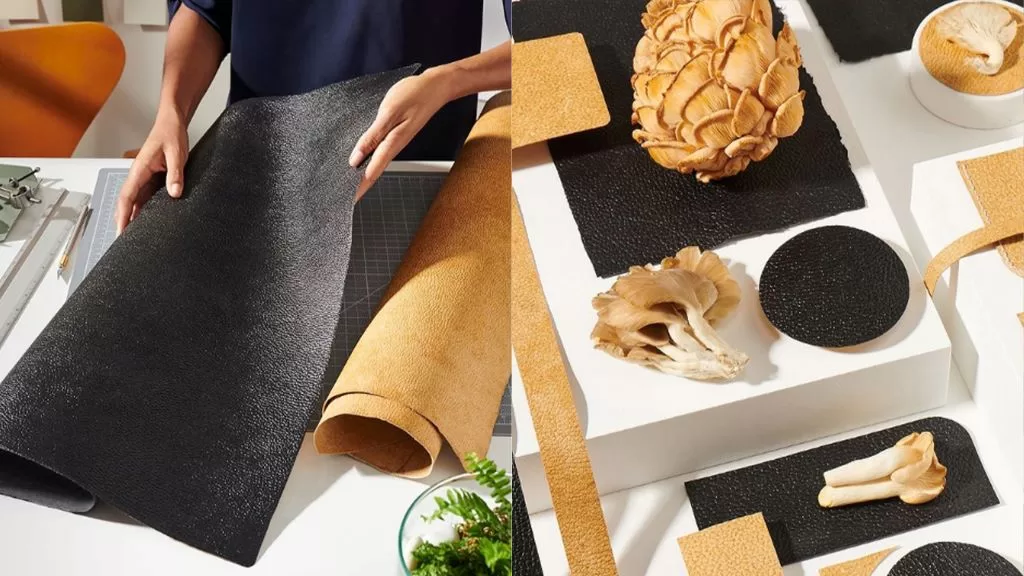Mushroom, Microbial, and Lab-Grown – IDTechEx Explores Emerging Leather Alternatives
Monday 16 September 2024
IDTechEx
Cambridge, UK
Mushroom, Microbial, and Lab-Grown – IDTechEx Explores Emerging Leather Alternatives

Bio-based, plant, and mushroom leathers are all emerging possibilities for replacements within the leather industry, all with their own techniques, challenges, and benefits. IDTechEx explores the incumbent leather market and the motivations behind these emerging alternatives in their latest report, “Emerging Alternative Leathers 2024-2034: Technologies, Trends, Players”.
The leather market
While grain and split leather are the two major types of widely used animal leather, alternative options such as vegan leather, bio-leather, and plant or mushroom leather try to mimic the look and feel of these materials. The environmental costs of animal leather, including the effects of greenhouse gases, deforestation, land usage, and habitat destruction, create opportunities for alternatives where businesses and consumers may prefer to opt for more sustainable choices. However, the challenges arise where the durability and lifetimes of these leather alternatives struggle to match up to treated animal leathers.
Primary leather alternatives
Plant-based leathers, closely followed by mycelium, are the most popular leather alternatives. Materials derived from plants act as input feedstocks, including apple skins, pineapple leaves, cacti, grapes, and bamboo. They are applied in many different processes to produce leather-like materials, using technology and infrastructure that already largely exist. Challenges and barriers to the production of plant-based leathers might include making the material plastic-free to ensure products can be eco-friendly, durable, and customizable.
Mycelium or mushroom leather can be created from the threadlike roots of fungi, woven together to form a mat-like material that can be cut and shaped. With low water and energy usage and an R&D focus on different strains and growth conditions, the main challenges to this approach include initial investments, the ability to reach a competitive price amongst other alternatives, and, like plant-based leather, customizability. Because the growth and production of mycelium leather can take place within the same environment, there isn’t a need for lots of infrastructure, providing greater accessibility for startup companies.
Microbial and lab-grown leathers are the two other main alternatives, using the fermentation of microorganisms and the biopsies of animal skin cells, respectively, to produce similar leather-like materials. Though microbial leather may be a more sustainable option, it is in the very early stages of production, requiring a lot of investment and R&D, and currently still uses plastic content to improve the final product. Lab-grown leathers may not be too popular as they still utilize the cells of animals, so cannot quite be classified as vegan, potentially discouraging customers.
Consumer and brand awareness
Animal welfare movements, ethics, and individual footprints may increase customer and brand awareness, acting as additional drivers for emerging leather alternatives. Companies making sustainable choices for their marketing strategies could work in their favor, especially since they may also face carbon taxes and the effects of growing regulations when opting for animal leather. The main sectors affected by these taxes and, therefore, beginning to choose leather alternatives may be the fashion industry, interior design, and automotives. The use of these alternatives, particularly within the automotive industry, could lead to large production scales and company successes, although high standards, durability, and quality would first need to be established.
The main challenges leather alternative companies face will be getting consumers and brands on board without compromising quality. Aesthetic, strength, durability, and sustainability are all factors to be considered when choosing leather alternatives, and investment hurdles and market competitiveness will still need to be overcome before real growth can be seen. IDTechEx predicts the emerging leather alternative market to grow at a CAGR of 37.4% over the next 10 years, with over 70 companies currently involved. For more information, visit IDTechEx’s latest report, “Emerging Alternative Leathers 2024-2034: Technologies, Trends, Players”. Downloadable sample pages are available for this report.
For the full portfolio of market research available from IDTechEx, please see www.IDTechEx.com.
About IDTechEx
IDTechEx provides trusted independent research on emerging technologies and their markets. Since 1999, we have been helping our clients to understand new technologies, their supply chains, market requirements, opportunities and forecasts. For more information, contact [email protected] or visit www.IDTechEx.com.


























